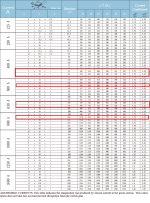LewTwo
1 MW
Well the USPS managed to lose the copper bus bars I ordered for my Headway battery. Seeing as how copper is so god awful expensive and is not available in the proper 2-1/2 inch bar width anyway, I started considering Aluminum as an alternative. Now I know that copper wire has a lower resistance than aluminum wire but what effect do the various Aluminum alloys have? I found a comparative table on the internet but the values were not the same order of magnitude and made it bit like comparing apples to strawberries. So downloaded the table and imported it into a spreadsheet. Then I normalized all the values. I made a copy of this table in another tab and added in some additional materials of interest ... specifically common Aluminum alloys, solder, carbon steel as well as a few others. Then I sorted according the the resistance values.
A few things surprised me. I have always thought gold was an excellent electrical conductor. Turns out it is just a tad better than Aluminum. I was also surprised to learn that Electrical Solder (60/40) has more than six times the resistance of copper. Lastly extruded Aluminum bars are most likely 6063-T5 which has nearly twice the resistance of copper.
I offer this file up to anyone that may have a similar question.
View attachment ELECTRICAL RESISTIVITY.xlsx
A few things surprised me. I have always thought gold was an excellent electrical conductor. Turns out it is just a tad better than Aluminum. I was also surprised to learn that Electrical Solder (60/40) has more than six times the resistance of copper. Lastly extruded Aluminum bars are most likely 6063-T5 which has nearly twice the resistance of copper.
I offer this file up to anyone that may have a similar question.
View attachment ELECTRICAL RESISTIVITY.xlsx



